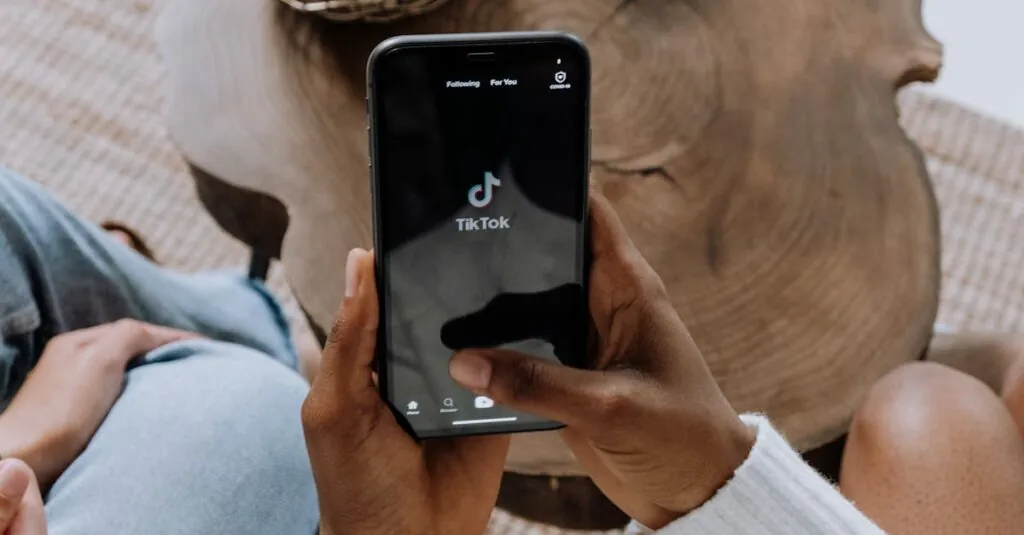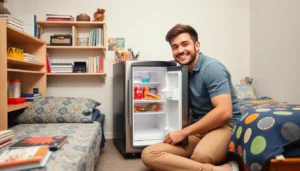Table of Contents
ToggleIn today’s digital playground, keeping tabs on kids can feel like trying to catch a greased pig. With apps popping up faster than you can say “screen time,” parents often wonder how to regain control. Blocking an app on a child’s iPhone isn’t just a tech-savvy move; it’s a necessary step to protect them from the digital wild west.
Understanding App Blocking on iPhone
Blocking an app on a child’s iPhone serves as an essential tool for parents seeking to control their child’s digital environment. Various built-in features and settings make this process straightforward. First, navigate to Settings, then select Screen Time. Enabling Screen Time provides access to app management options, including app blocking.
Restrictions on specific apps can significantly limit a child’s exposure to inappropriate content. Parents can choose to limit gaming apps, social media platforms, or any applications deemed unsuitable. Further, they can set time limits on app usage to encourage balanced screen time.
Communication plays a pivotal role in this process. Discussing the reasons behind blocking apps fosters understanding between parents and children. It’s vital for parents to explain their concerns, reinforcing the desire to protect and guide rather than simply impose restrictions.
Using the App Limits feature enhances control over a child’s app usage. By setting specific time frames, parents can deter excessive use while promoting healthier habits. Moreover, always revisit these settings periodically. Frequent adjustments may align app restrictions with the child’s growing understanding of digital safety.
Customizing app access for younger children requires more stringent measures compared to older teens. Tailoring restrictions based on age and maturity ensures that limits remain relevant. Educating children about safe online practices will bolster the effectiveness of these controls.
Overall, understanding and implementing app blocking not only protects children but also encourages responsible digital behavior.
Reasons to Block Apps
Blocking apps on a child’s iPhone serves multiple important purposes. Parents aim to protect their child’s online safety and well-being.
Protecting Your Child’s Privacy
Privacy is a significant concern in the digital age. Some apps collect excessive personal information, which can lead to unauthorized data sharing. By blocking these apps, parents limit exposure to potential privacy breaches. This action safeguards sensitive information, such as location and contacts. Moreover, securing personal data helps children understand the importance of digital privacy. Parents can emphasize respect for their online footprint while fostering discussions about appropriate app interactions.
Reducing Screen Time
Excessive screen time impacts children’s physical and mental health. Blocking certain apps can effectively limit usage, encouraging outdoor activities and engagement with peers. Research indicates that balanced screen time promotes better sleep and cognitive development. Setting restrictions on popular yet distracting apps helps children prioritize responsibilities. Parents can guide their children to allocate time wisely, creating space for other interests. By reducing digital distractions, families may find improved connections during shared experiences.
How to Block an App on Your Child’s iPhone
Blocking apps on an iPhone enhances parental control. It effectively safeguards children from potential online dangers.
Using Screen Time Settings
Screen Time offers a straightforward method for app management. Access the feature by navigating to Settings, then Screen Time. Once there, selecting “App Limits” allows for specific app restrictions. Parents can set time limits for certain categories like games or social media. The functionality to block apps entirely exists under “Always Allowed.” This feature lets parents decide which apps should remain accessible. Enabling “Use Screen Time Passcode” provides an additional layer of security. By utilizing these settings, parents create a balanced digital environment for their children.
Setting Up Content Restrictions
Content restrictions are vital for controlling what children access. Start by going to Settings, then Screen Time, and select “Content & Privacy Restrictions.” Activating these restrictions protects children from inappropriate content. Parents can block websites, specific apps, and even explicit content in music and podcasts. By setting age-based ratings, apps unsuitable for different maturity levels remain inaccessible. The option to hide apps from the home screen exists too, simplifying navigation. Regularly discussing these settings with children instills an understanding of safe online behavior. This proactive approach fosters a conversation around digital responsibility.
Alternatives to Blocking Apps
Sometimes blocking apps isn’t the only solution. Parents can explore various alternatives that promote safety and responsible usage.
Monitoring App Usage
Regularly monitoring app usage provides insights into children’s online activities. By checking usage patterns, parents can identify apps that may pose risks. Tools like Screen Time offer a clear view of daily and weekly usage metrics. Monitoring fosters an understanding of a child’s interests while ensuring they engage with appropriate content. Tracking can also help parents discuss potential dangers, creating a teachable moment around digital choices.
Encouraging Open Communication
Open communication about app usage promotes trust and understanding. Parents should create a safe environment for children to express concerns or ask questions. Sharing reasons behind app restrictions helps them grasp the importance of online safety. Regular conversations should focus on experiences with apps, allowing for deeper insight into social interactions and pressures. By discussing digital behavior, parents guide children toward responsible choices without creating resistance.
Blocking apps on a child’s iPhone is a proactive step towards ensuring their safety in the digital world. By utilizing features like Screen Time parents can effectively manage app access while fostering responsible digital habits. Open discussions about these restrictions not only enhance understanding but also build trust between parents and children.
Taking control of app usage helps protect children’s privacy and encourages healthier lifestyle choices. With the right balance of monitoring and communication parents can create a safer online environment. Ultimately this approach empowers children to navigate their digital lives responsibly while minimizing potential risks.







